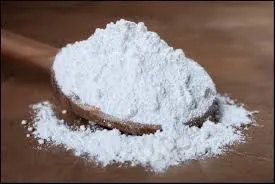
Exploring the Unique Properties and Applications of C3Cl3N3O3 in Modern Chemistry and Industry
Understanding C3Cl3N3O3 A Multifaceted Compound with Diverse Applications
In the world of chemistry, compounds with intricate structures often hold significant importance due to their unique properties and functionalities. One such compound is trichloroisocyanuric acid, chemically represented as C3Cl3N3O3. This compound is part of a larger family of chlorine-based disinfectants and has gained attention for its effectiveness, versatility, and potential environmental implications.
Chemical Structure and Properties
Trichloroisocyanuric acid, also known by its abbreviation TCCA, consists of three chlorine atoms, three nitrogen atoms, and three oxygen atoms, forming a stable and complex molecular structure. The presence of chlorine atoms contributes to its potent biocidal properties, making it effective in various applications, especially in water treatment processes. Its systematic structure allows it to release chlorine slowly, ensuring prolonged disinfection and stability.
The compound is typically encountered in a powdered or granular form, which can readily dissolve in water, releasing hypochlorous acid and providing a steady supply of available chlorine. This characteristic makes TCCA a preferred choice in various applications, including swimming pool sanitation, industrial water treatment, and sanitization of drinking water.
Applications in Water Treatment
One of the most significant uses of C3Cl3N3O3 is in the realm of water treatment. The compound is widely employed to eliminate pathogens, algae, and bacteria in swimming pools and recreational water bodies. The slow release of chlorine ensures that the water remains sanitized over time, reducing the frequency of chemical addition and maintenance for pool operators. Moreover, TCCA is effective in maintaining water quality in industrial cooling towers and wastewater treatment plants, where controlling microbial growth and biofilm formation is crucial.
c3cl3n3o3

Role in Public Health
The importance of trichloroisocyanuric acid extends beyond recreational facilities; it plays a crucial role in public health initiatives. In many parts of the world, access to safe drinking water is a persistent challenge. TCCA's efficacy as a disinfectant allows for the treatment of municipal water supplies and emergency water purification, especially in disaster-stricken areas where water quality may be compromised. Its stability and ease of use make it an invaluable tool for public health officials aiming to prevent waterborne diseases.
Environmental Considerations
While the advantages of C3Cl3N3O3 are well-documented, its use is not without environmental concerns. The release of chlorine into the environment, if not managed properly, can lead to the formation of harmful chlorinated byproducts. These byproducts have the potential to bioaccumulate and impact aquatic ecosystems negatively. Furthermore, the residual chlorine in treated water can affect marine life upon discharge. Therefore, it is vital to manage the dosage and application of TCCA carefully to mitigate potential ecological impacts.
Conclusion
C3Cl3N3O3, or trichloroisocyanuric acid, exemplifies the dual-edged nature of chemical compounds in both benefiting society and posing environmental challenges. Its applications in water treatment and public health underscore its significance, yet it serves as a reminder of the responsibility that comes with chemical use. As research continues and technology advances, finding a balance between effective sanitation and ecological preservation will be crucial in ensuring that compounds like TCCA can sustain their place in our toolkit while protecting the environment for future generations. Understanding and managing such compounds is essential as we navigate the complexities of modern chemical applications in a world increasingly conscious of health and environmental sustainability.
-
nitrile-rubber-honoring-strict-production-standardsNewsAug.22,2025
-
aspartame-ingredients-honoring-food-safety-valuesNewsAug.22,2025
-
fertilizer-for-balanced-plant-nutritionNewsAug.22,2025
-
cyanide-gold-processing-with-high-purity-additivesNewsAug.22,2025
-
formic-acid-in-textile-dyeing-applicationsNewsAug.22,2025
-
aluminum-hydroxide-gel-in-skincare-productsNewsAug.22,2025
-
Regulatory Compliance for Global Mining Chemicals UseNewsAug.12,2025
Hebei Tenger Chemical Technology Co., Ltd. focuses on the chemical industry and is committed to the export service of chemical raw materials.
-

view more DiethanolisopropanolamineIn the ever-growing field of chemical solutions, diethanolisopropanolamine (DEIPA) stands out as a versatile and important compound. Due to its unique chemical structure and properties, DEIPA is of interest to various industries including construction, personal care, and agriculture. -

view more TriisopropanolamineTriisopropanolamine (TIPA) alkanol amine substance, is a kind of alcohol amine compound with amino and alcohol hydroxyl, and because of its molecules contains both amino and hydroxyl. -

view more Tetramethyl Thiuram DisulfideTetramethyl thiuram disulfide, also known as TMTD, is a white to light-yellow powder with a distinct sulfur-like odor. It is soluble in organic solvents such as benzene, acetone, and ethyl acetate, making it highly versatile for use in different formulations. TMTD is known for its excellent vulcanization acceleration properties, which makes it a key ingredient in the production of rubber products. Additionally, it acts as an effective fungicide and bactericide, making it valuable in agricultural applications. Its high purity and stability ensure consistent performance, making it a preferred choice for manufacturers across various industries.





